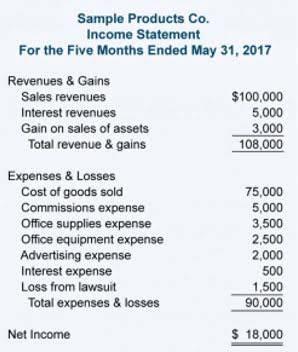
In this case, your assets usually represent your initial investment, the starting capital of the business. You might also have a business loan to help you kick-start your operation and the supplies. An opening balance is the amount in a financial account when a new period begins, like a new year or month (it also applies to when you set up a new company file in QuickBooks). In other words, it’s the first number you see when looking at your finances for a new period. As mentioned above, opening balance equity is needed to ensure that your accounting remains balanced and that the financial records of a business are accurate. The treatment of Opening Balance Equity is guided by established accounting frameworks, which provide the principles and standards for https://www.bookstime.com/ its management.
- In QuickBooks, you might stumble upon the opening balance equity account, which can be confusing (especially if you’ve just started to work with the software) as you look at something you didn’t set up.
- The audit process includes testing the transactions that reduce the Opening Balance Equity account.
- Retained earnings are the profits that a company has chosen to reinvest in the business rather than distribute as dividends.
- The establishment of Opening Balance Equity is a fundamental step in the creation or transition of a company’s financial records.
- For example, if an entrepreneur invests $50,000 to initiate a new venture, the Opening Balance Equity account would reflect this amount.
- Assets include any cash your business has on hand, as well as anything that your business has purchased and could sell in the future.
Managing Opening Balance Equity for Presentable Balance Sheets
- It represents the beginning balance of a company’s equity at the start of a new accounting period.
- In the ledger, balance b/d means opening (or) the beginning balance of an account.
- But imagine you creating a company file in QuickBooks, and it pops up seemingly out of nowhere, showing some balance on it.
- The image below shows the warning you’ll see when you do this—and you’ll have to click the Yes, make inactive button to proceed.
- You’ll need to create a new account on your Chart of Accounts (COA) for those incorrect entries and use the OBE account as intended.
- Eliminating an Opening Balance Equity account might require a professional bookkeeper, and you can check out our roundup of the best online bookkeeping services to find a provider.
- This account appears in your organization’s chart of accounts as an equity account, and is created automatically by the software.
It is very important for businesses to maintain their financial records properly in order to showcase the true state of the companies. For this, they can seek assistance from accountants who have extensive knowledge regarding opening balance equity. After creating the journal entry to transfer the balance in the opening balance equity account to the appropriate equity accounts, the opening balance equity account should have a zero balance, meaning that you’re good. Let’s try to beat up the confusion about the opening balance equity account and figure out its purpose and how to reconcile it in QuickBooks to present professional balance sheets to banks, auditors, and potential investors. QB is double entry accounting, so for every entry there has to be an equal entry in a second account.
- Companies pay dividends as a way to distribute a portion of their profits to shareholders.
- It signifies the owner’s contribution to the business at the inception, distinguishing between personal and business finances.
- After the initial setup, you may need to make adjustments or corrections to the opening balance equity account.
- Similarly, if there were any other changes that affected the equity figure, these adjustments must be made to arrive at the final opening balance equity figure.
- GAAP requires that companies eventually reallocate the balance in the Opening Balance Equity account to the appropriate permanent equity accounts, such as retained earnings or additional paid-in capital.
- Once you have a grasp of the basics of opening balance equity, you will be able to correct it and reduce it to zero.
How can You Enter the Equity from the Opening Balance in QuickBooks?

Opening Balance Equity accounts show up under the equity section of a balance sheet along with the other equity accounts like retained earnings but may not show up on the opening balance sheet if the balance is zero. Opening balance equity is an account created by accounting software to offset opening balance transactions. If you have been asking yourself, “What is opening balance equity on a balance sheet? We will go over opening balance equity, the reasons it’s created, and how to close it out so your balance sheets are presentable to banks, auditors, and potential investors. Interpreting opening balance equity can help investors and stakeholders understand whether a company is starting the new period with a strong financial foundation or if there are potential red flags to watch out for.
Controversial or Contextual: The Mysterious World of Other Comprehensive Income
Owner’s equity refers to the investment of the owner in the business minus the owner’s withdrawals from the business plus the net income (or minus the net loss) since the beginning of the business. He has a CPA license in the Philippines and a BS in Accountancy graduate at Silliman University. When you first connect bank feeds, QuickBooks asks at which point in time to start importing transactions. If there is a balance in the account on that date, QuickBooks what is an opening balance equity will record that balance with an offsetting entry to Opening Balance Equity. As you can see, many things can cause having a non-zero balance on the OBE account.
- The first items to add are called current assets, which include cash on hand or what you have in a cash register, money in the bank, inventory you plan to sell and any expenses that you have pre-paid such as insurance.
- So, let’s hop right on to find out what the opening balance equity account is and why it can confuse you.
- It is one of several default accounts in the owner’s equity section of the balance sheet and should always be zero since you need to avoid making one-sided journal entries.
- I’m trying to understand OBE so I can know the proper place for these journal entries because they aren’t making sense to me.
- Setting up your business accounting in QuickBooks (or other accounting software) for the first time, it’s likely that you may not have encountered an opening balance equity account yet.
- Make a journal entry to transfer Opening Balance Equity to an equity account that’s more aptly named, such as Contributed Capital.
- In a sole proprietorship, these transactions are recorded directly in the owner’s equity account.

This will help you identify any errors or discrepancies that may arise, and allow you to correct them before they become bigger problems. You or your bookkeeper can close this account in a variety of ways by making https://x.com/BooksTimeInc journal entries. Clear the balance in this account to make your balance sheet look more professional and clean.


